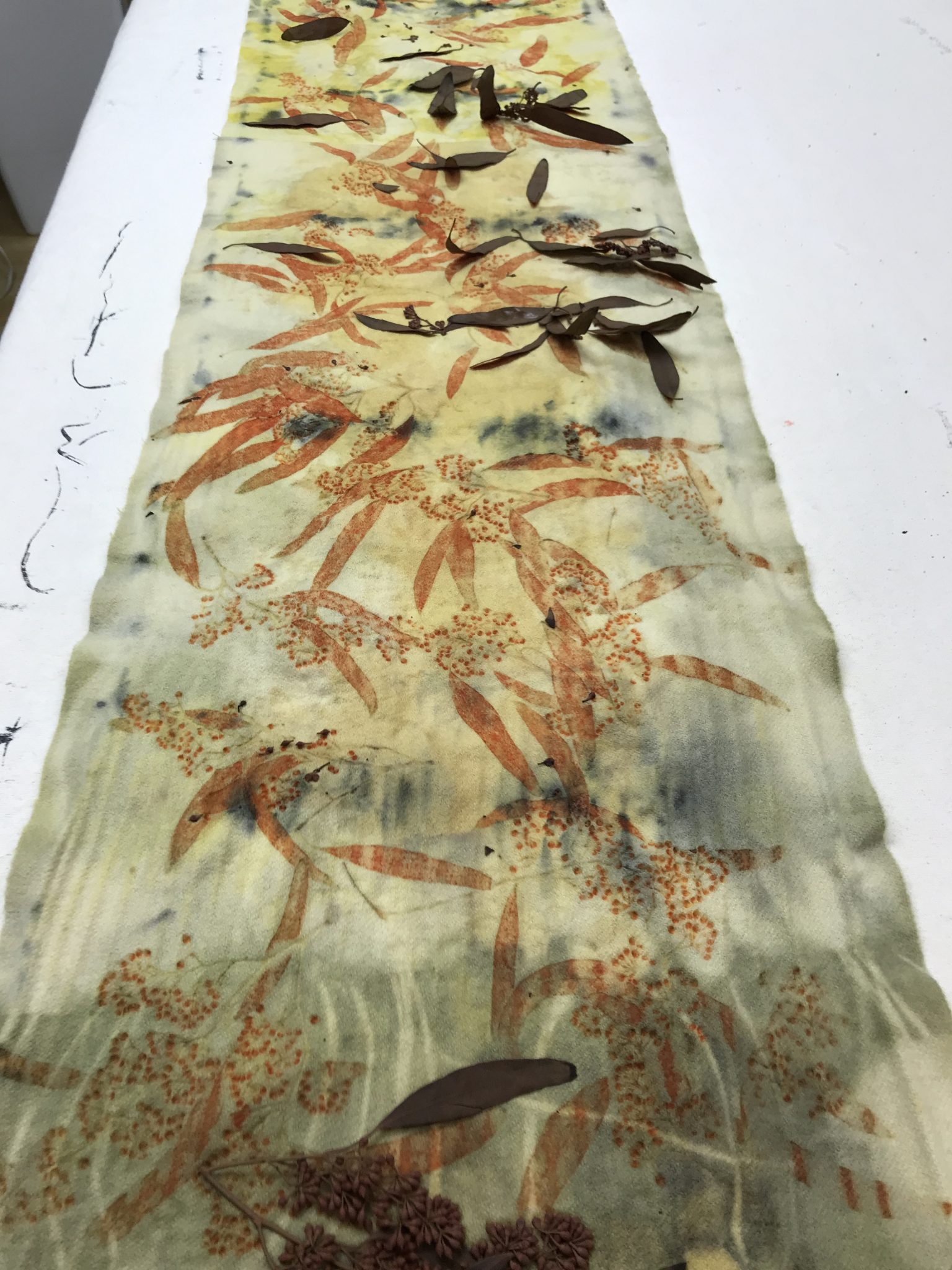[vc_row][vc_column][vc_column_text]This week: Muting oranges and reds from eco-printing and using three types of logwood for different impacts.
Each week, we are emailed with questions from our natural dye community asking simple and complex questions that we thought might be worth sharing. Here are a handful from this week answered by natural dyer in chief, Kathy Hattori, Founder of Botanical Colors:
Image: Valerie Zeman
(Above ) This is a piece of merino wool mordanted with aluminum sulfate (not sure if that was my best choice). It was wrapped around an iron pipe and steamed. The plant material was a form of eucalyptus. I do like the brightness of the leaves or the yellow in the background. Do you have any advice as to what natural dye would knock back the yellow and orange without covering it up entirely?
If you are looking to subdue the intensity of the leaves, you can try a light indigo overdye, which would create a green background where the yellow color is, and should neutralize the deep orange of the leaves. A walnut overdye is also possible as the piece is already mordanted. This would deepen the yellow background and subdue the orange leaves with a brown shade. Be aware that walnut and iron will also create very dark shades, so some experimentation might be in order.
I want to try logwood for the first time. What is the difference between the special logwood (is it powder?) and the the logwood chips? Is there an advantage of one over the other?
The extracts are strong. The regular logwood has a slight brown undertone, so it’s good for making dark neutrals like black and gray. The Rich Logwood has a bluish undertone and is potent. I keep “refreshing” this dye bath with a very tiny amount of soda ash and it keeps dyeing.
The Logwood Chips are rough-cut and can be used multiple times. Dry them out between uses and you can also cut the pieces finer to extract more dye.I have read that Logwood does not work well with cellulose fiber in making purple. What is a good natural dye for getting purple for linen and cotton?If you mordant with aluminum acetate and tannin, you can get a very nice and fairly stable purple from logwood. Otherwise, tannin and iron create a dull purple-gray that a lot of designers love, and it’s quite lovely on cellulose fiber. A small amount of iron creates a grayed lavender and a larger amount creates the purplish shade.
[/vc_column_text][/vc_column][/vc_row]

